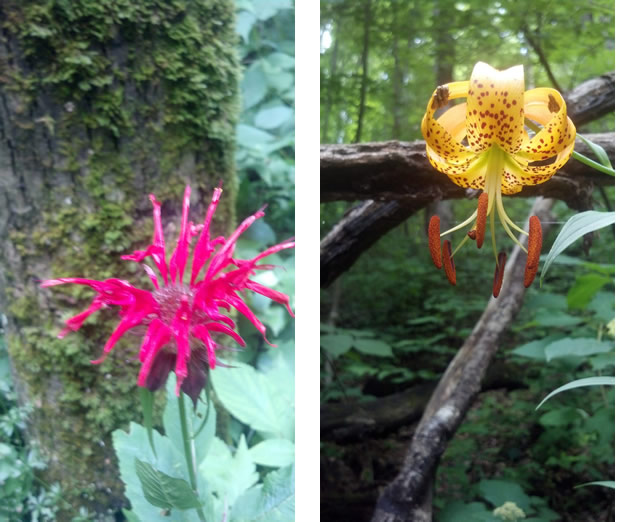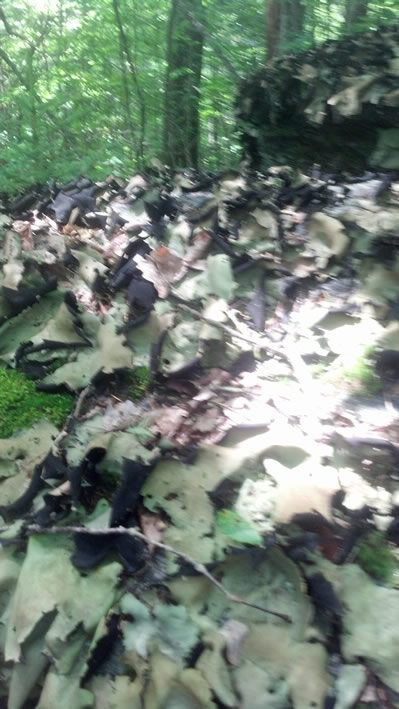Micah Jasny is a graduate student from the Nicholas School of the Environment at Duke University working this summer as an E.O. Wilson Biodiversity Foundation intern, as part of the ATBI/BioBlitz SWAT Team. His work is supported through a partnership with Discover Life in America. This summer he will try to discover new species to add to the park inventories in order to better understand park ecosystems and how to care for them. He also plans to help other scientists working in the park with their biodiversity surveys and scientific research. In the upcoming weeks, he will give weekly updates about his forays into the park and report back on his biodiversity research.
ATBI/BioBlitz SWAT Team: Week 5 in Great Smoky Mountains National Park
I hope everyone had a great Independence Day! I really enjoyed the 4th of July parade here in Gatlinburg. In other news, I have decided to bait my earwig pitfall traps with a mixture of soy sauce and oil. Yes, soy sauce. According to several papers, it attracts earwigs and is less likely to attract bears or other megafauna than some of the other suggested methods (namely bacon grease and tuna cans). So far, I have placed 75 traps at five different ATBI survey sites around the Great Smoky Mountains National Park (GSMNP) including the Twin Creeks area, Clingman’s Dome, along the Appalachian Trail, and in Cherokee County. I plan to check the traps sometime this week and with any luck, will begin to collect specimens!
While I eagerly await my earwig collections, I was fortunate enough to go on an inventorying hike this week with Keith Langdon, who was the inventory and monitoring coordinator for the GSMNP for several decades. Early Tuesday morning I met with DLiA interns, Dan Mele, and Mark Sowers, and Keith at the visitor’s center along with a field biologist, Tom Howe. Together we drove down to the Cherokee part of the park where we met another biologist, Dan Pittillo. While much inventory work has been done in the Tennessee part of the park, some areas in North Carolina are not as well studied. The purpose of this hike was to observe and identify plant, bird, and butterfly (order Lepidoptera) species as well as to search for a rare plant called the Glade Spurge, which had previously been spotted in the area.
This hike also gave us a glimpse of the GSMNP’s interesting and unique geology. One explanation for the high biodiversity of the GSMNP is the heterogeneous geology characteristic of this region. Different soil and rock types give rise to different plant communities, which in turn support numerous different assemblages of species. Our hike took us through a band of amphibolite, a metamorphic rock, which breaks down into a very rich or “sweet” soil as Keith informed us.
Armed with our packs, a GPS unit, sampling vials, and a butterfly net we began our journey into the woods and up a steep ridge. Mercifully, Keith let us leave the numerous taxonomic books on plants, birds, and other species in his car. Periodically along the trail, we all stopped and fanned-out to identify species that we observed. Keith and Dan Pittillo were both experts at identifying different plant species while Tom Howe was really good at identifying birds based on call and sight as well as different Lepidoptera species. The group relayed the different species back to Keith who wrote them down in his journal and Mark determined the coordinates of the inventory location using the GPS unit.


While we were unable to find the Glade Spurge we did find an abundance of other fascinating species. We found numerous bee balm (Monarda) plants, which have flowers that look like a bright red and pink explosions. There were also many Turk’s Cap lilies (Lilium superbum), which had very vibrant and elegant flowers. While not as visually pleasing as the flowers, we also found an interesting lichen in the top of the ridge called “rock tripe” (Umbilicaria). This species was given this name because it, in fact, looks kind of like numerous stomachs have been placed adhered to the rock (tripe typically refers to a cow’s stomach). We were informed that the lichen could be eaten in a pinch but that there is a big difference between edible and palatable.


We counted and inventoried a myriad of other species throughout the day as we hiked along the ridge. All in all, it was a wonderful opportunity to go out with Keith, Tom, and both Dans and to have them share some of their knowledge and experiences they have had with the Great Smoky Mountains National Park. I hope that I will be able to remember most of the species I learned about and to be able to identify them in the future.
Finally, speaking of inventorying DLiA is having another BioBlitz event this weekend on Saturday, July 11th, at Whites Creek in Spring City, Tennessee! We will be splitting into groups and walking along the trails that run along Watts Bar Lake. I hope to see you there!
—Micah Jasny

